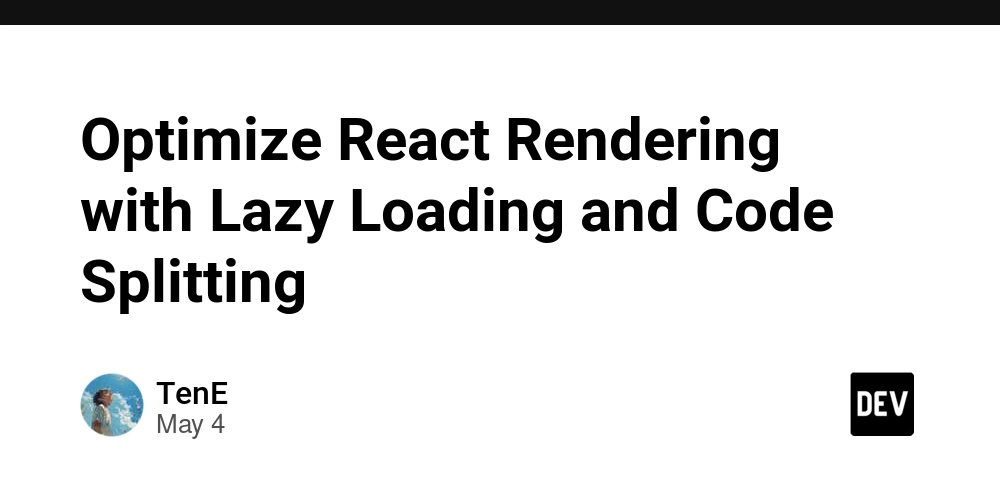Step-by-Step Guide to Building a Video Conference App with ZEGOCLOUD Video Conference Kit
In today's digital age, video conferencing has become an essential tool You can explore more on ZEGOCLOUD’s official website for powerful tools to build such apps... for remote work, education, and social interaction. Building a video conference application from scratch can be complex, but with ZEGOCLOUD's Video Conference Kit, developers can integrate feature-rich video conferencing capabilities into their web applications quickly and easily. This comprehensive guide will walk you through the process of setting up a video conference app using ZEGOCLOUD's Video Conference Kit in simple, beginner-friendly language. We'll cover everything from prerequisites to customization, including a detailed code tutorial with step-by-step instructions. What is ZEGOCLOUD Video Conference Kit? ZEGOCLOUD's Video Conference Kit is a prebuilt, feature-rich component that allows developers to embed video conferencing functionality into web and mobile applications with minimal coding. It provides a ready-to-use user interface (UI) and business logic, enabling you to create Zoom-like video conferencing apps in minutes. Key features include: High-quality video and audio: Supports crystal-clear voice and video, even in low-bandwidth conditions. Screen sharing: Allows users to share their screens during calls. Customizable layouts: Supports gallery and picture-in-picture layouts. Real-time interaction: Includes in-room messaging, participant management, and more. Cross-platform support: Works on web browsers (PC and mobile) and integrates with frameworks like React, Angular, and Vue. This guide focuses on the web version of the Video Conference Kit, using HTML and JavaScript for integration. Prerequisites Before we dive into the tutorial, ensure you have the following: Basic Knowledge: Familiarity with HTML, CSS, and JavaScript. Basic understanding of web development concepts. Development Environment: A code editor (e.g., Visual Studio Code). A modern web browser (Google Chrome is recommended for best compatibility). Node.js and npm (if using a framework like React). ZEGOCLOUD Account: Sign up for a free account on the ZEGOCLOUD Admin Console. Create a project to obtain your AppID and ServerSecret, which are required for authentication. Internet Connection: A stable internet connection for testing and deploying your application. Step-by-Step Tutorial: Building a Video Conference App Let's build a simple video conference app using ZEGOCLOUD's Video Conference Kit. We'll use the HTML script method for integration, as it's the simplest approach for beginners. Follow these steps carefully. Step 1: Set Up Your ZEGOCLOUD Project Log in to ZEGOCLOUD Admin Console: Visit ZEGOCLOUD Admin Console and sign in or create an account. Create a New Project: Click on Create Project and select UIKit as the project type. Give your project a name (e.g., "VideoConferenceApp"). Obtain AppID and ServerSecret: Once the project is created, you'll see your AppID (a numeric value) and ServerSecret (a string). Note these down, as you'll need them to generate a Kit Token for authentication. Enable Video Conference Kit: In the project dashboard, ensure the Video Conference Kit is enabled. This is usually enabled by default for UIKit projects. Step 2: Set Up Your Project Folder Create a Project Directory: On your computer, create a new folder called video-conference-app. Inside this folder, create a file named index.html. Basic HTML Structure: Open index.html in your code editor and add the following basic HTML structure: ZEGOCLOUD Video Conference App #root { width: 100vw; height: 100vh; } The #root div will serve as the container for the video conference UI. The CSS ensures the video conference interface takes up the full viewport. Step 3: Import ZEGOCLOUD Video Conference Kit 1 Add the ZEGOCLOUD SDK: Include the ZEGOCLOUD Video Conference Kit SDK by adding the following tag inside the of your index.html, just before the closing tag: This script loads the prebuilt Video Conference Kit library from a CDN, making it easy to integrate without installing dependencies. 2 Verify SDK Import: Save the file and open index.html in a browser (e.g., Chrome) using a local server. To run a local server, you can use: VS Code: Install the "Live Server" extension and right-click index.html to open with Live Server. Node.js: Run npx http-server in the project folder. Ensure there are no errors in the browser's console. Step 4: Generate a Kit Token The ZEGOCLOUD Video Conference Kit requires a Kit Token for authentication. This token is generated using your AppID, ServerSecret, and other parameters like roomID, userID, and userName. Add Token Generation Logic: Below the SDK script, add a tag wit

In today's digital age, video conferencing has become an essential tool You can explore more on ZEGOCLOUD’s official website for powerful tools to build such apps... for remote work, education, and social interaction. Building a video conference application from scratch can be complex, but with ZEGOCLOUD's Video Conference Kit, developers can integrate feature-rich video conferencing capabilities into their web applications quickly and easily. This comprehensive guide will walk you through the process of setting up a video conference app using ZEGOCLOUD's Video Conference Kit in simple, beginner-friendly language. We'll cover everything from prerequisites to customization, including a detailed code tutorial with step-by-step instructions.
What is ZEGOCLOUD Video Conference Kit?
ZEGOCLOUD's Video Conference Kit is a prebuilt, feature-rich component that allows developers to embed video conferencing functionality into web and mobile applications with minimal coding. It provides a ready-to-use user interface (UI) and business logic, enabling you to create Zoom-like video conferencing apps in minutes. Key features include:
- High-quality video and audio: Supports crystal-clear voice and video, even in low-bandwidth conditions.
- Screen sharing: Allows users to share their screens during calls.
- Customizable layouts: Supports gallery and picture-in-picture layouts.
- Real-time interaction: Includes in-room messaging, participant management, and more.
- Cross-platform support: Works on web browsers (PC and mobile) and integrates with frameworks like React, Angular, and Vue.
This guide focuses on the web version of the Video Conference Kit, using HTML and JavaScript for integration.
Prerequisites
Before we dive into the tutorial, ensure you have the following:
-
Basic Knowledge:
- Familiarity with HTML, CSS, and JavaScript.
- Basic understanding of web development concepts.
-
Development Environment:
- A code editor (e.g., Visual Studio Code).
- A modern web browser (Google Chrome is recommended for best compatibility).
- Node.js and npm (if using a framework like React).
-
ZEGOCLOUD Account:
- Sign up for a free account on the ZEGOCLOUD Admin Console.
- Create a project to obtain your
AppIDandServerSecret, which are required for authentication.
-
Internet Connection:
- A stable internet connection for testing and deploying your application.
Step-by-Step Tutorial: Building a Video Conference App
Let's build a simple video conference app using ZEGOCLOUD's Video Conference Kit. We'll use the HTML script method for integration, as it's the simplest approach for beginners. Follow these steps carefully.
Step 1: Set Up Your ZEGOCLOUD Project
-
Log in to ZEGOCLOUD Admin Console:
- Visit ZEGOCLOUD Admin Console and sign in or create an account.
-
Create a New Project:
- Click on Create Project and select UIKit as the project type.
- Give your project a name (e.g., "VideoConferenceApp").
-
Obtain AppID and ServerSecret:
- Once the project is created, you'll see your
AppID(a numeric value) andServerSecret(a string). - Note these down, as you'll need them to generate a Kit Token for authentication.
- Once the project is created, you'll see your
-
Enable Video Conference Kit:
- In the project dashboard, ensure the Video Conference Kit is enabled. This is usually enabled by default for UIKit projects.
Step 2: Set Up Your Project Folder
-
Create a Project Directory:
- On your computer, create a new folder called
video-conference-app. - Inside this folder, create a file named
index.html.
- On your computer, create a new folder called
-
Basic HTML Structure:
- Open
index.htmlin your code editor and add the following basic HTML structure:
- Open
lang="en">
charset="UTF-8">
name="viewport" content="width=device-width, initial-scale=1.0">
</span>ZEGOCLOUD Video Conference App<span class="nt">
id="root"> 




































































































































































![[The AI Show Episode 145]: OpenAI Releases o3 and o4-mini, AI Is Causing “Quiet Layoffs,” Executive Order on Youth AI Education & GPT-4o’s Controversial Update](https://www.marketingaiinstitute.com/hubfs/ep%20145%20cover.png)





























































































































![[FREE EBOOKS] Learn Computer Forensics — 2nd edition, AI and Business Rule Engines for Excel Power Users & Four More Best Selling Titles](https://www.javacodegeeks.com/wp-content/uploads/2012/12/jcg-logo.jpg)





![From Art School Drop-out to Microsoft Engineer with Shashi Lo [Podcast #170]](https://cdn.hashnode.com/res/hashnode/image/upload/v1746203291209/439bf16b-c820-4fe8-b69e-94d80533b2df.png?#)






































































































(1).jpg?#)
































_Inge_Johnsson-Alamy.jpg?width=1280&auto=webp&quality=80&disable=upscale#)










































































































![Apple to Split iPhone Launches Across Fall and Spring in Major Shakeup [Report]](https://www.iclarified.com/images/news/97211/97211/97211-640.jpg)
![Apple to Move Camera to Top Left, Hide Face ID Under Display in iPhone 18 Pro Redesign [Report]](https://www.iclarified.com/images/news/97212/97212/97212-640.jpg)
![Apple Developing Battery Case for iPhone 17 Air Amid Battery Life Concerns [Report]](https://www.iclarified.com/images/news/97208/97208/97208-640.jpg)
![AirPods 4 On Sale for $99 [Lowest Price Ever]](https://www.iclarified.com/images/news/97206/97206/97206-640.jpg)
































![[Updated] Samsung’s 65-inch 4K Smart TV Just Crashed to $299 — That’s Cheaper Than an iPad](https://www.androidheadlines.com/wp-content/uploads/2025/05/samsung-du7200.jpg)


































































